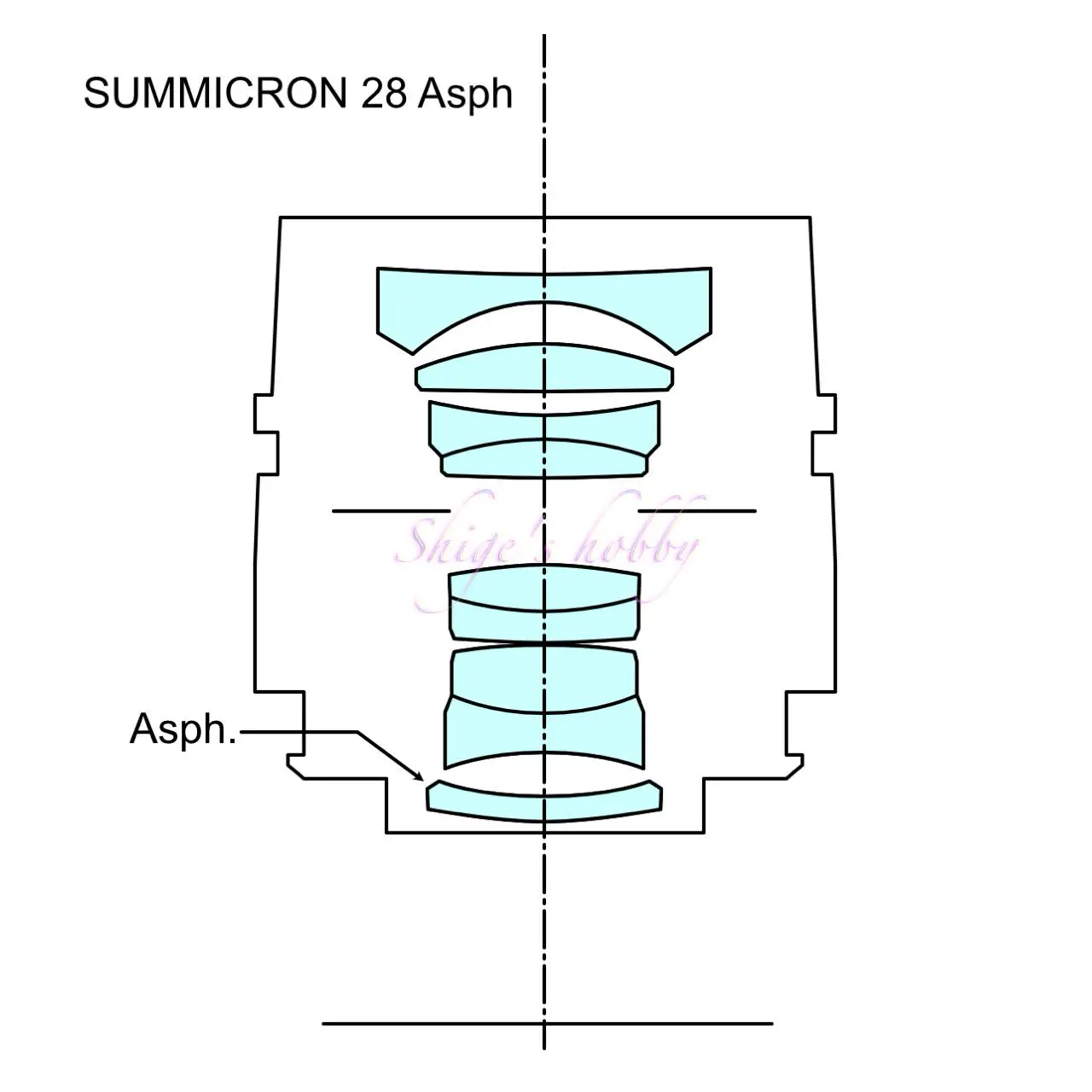Last updated on 2025-05-08
Review and photo examples using the SUMMICRON M 28mm F2 ASPH. with a Leica M digital camera
Table of contents
Gallery
- LEICA SUMMICRON-M 28mm F2 ASPH. Photo Example(with Leica M9P)
Review
1.Overview
The Summicron-M 28mm ASPH. was released in 2000 and was the first Leica M-mount lens with a focal length of 28mm to use an aspherical lens. The Elmarit, which is half a stop darker, was released in 2006 with the fifth generation to use an aspherical lens. The only R-mount lens with a focal length of 28mm that uses an aspherical lens is the zoom lens VARIO ELMAR 21-35 ASPH., and there are no fixed-focus Elmarits that use it.
The hood (12451/12547) of the Summicron-M 28mm ASPH. is the same as that of the fourth-generation Elmarit of the M-mount.
The only hood with two model numbers is the 12547, which is stamped M2.8/28 for the fourth-generation Elmarit that was sold earlier, and the 12451 is double-stamped with M2/28 and M2.8/28 for both the Summicron and Elmarit.
It’s typical of Leica to change the model numbers of accessories to coincide with the release of the Summicron. If you come across one second-hand, it might be worth checking out.
The 6-bit lens recognition code can be added to lenses that don’t have a code. Some older lenses had a 6-bit code added depending on the year of manufacture, and all renewed lenses have a 6-bit code added.
The exterior of the Summicron 28mm was renewed in 2016, and the hood was changed from the traditional hook type to a screw-in type in line with the latest Leica trends. The lens construction has not changed in the renewed version, and it has been a highly refined lens since its release.
2.Usability
generation Elmarit and Summicron on the market, and I was wondering which one to buy. At the time, the price difference between the two lenses was about 50,000 yen, so I chose the slightly brighter Summicron. Since then, I have not used the 4th generation Elmarit.
With the LEICA M9-P, which is difficult to use high ISO sensitivity, this lens, which is half a stop brighter than the Elmarit, was worth its weight in gold.
When shooting in low-light situations such as at dusk with a low ISO, this half stop is invaluable.
However, since the focal length is 28mm, the bokeh at full aperture does not change dramatically between F2 and F2.8, so it is a bit of a tricky lens to use with modern digital cameras that allow high ISO sensitivity.
As for the image quality, it is a modern lens that gives a sharp sense of resolution to the captured images, and there are no major complaints as long as it is used with the LEICA M9-P.
However, although it may be a problem specific to the lens I owned, this lens is not very resistant to backlight, and not only in harsh conditions where the sun is in front of the subject, but also depending on the position of the sun, strange ball-shaped lights caused by ghosts or flare can be captured.
The hood that came with the early Summicron 28mm was made of thick plastic and did not look very good, but the thin metal screw-on hood of the renewed model is unified with the lens and has a better overall styling.
This can be said of Leica lenses in general, but as of 2025 the Summicron has risen significantly in price and is out of reach.
3.Summary
To conclude, the Summicron 28mm is a lens that has fallen into a tricky position in the age of digital cameras. If you only think about photography, it’s hard to find a positive motivation to choose the Summicron.
However, the name Summicron has a magical power, and it’s in the nature of Leica addicts to want to choose it even if it’s only half a stop difference.
Specification and Competitor
As mentioned above, a major feature of the Summicron-M 28mm ASPH. is its use of aspherical lenses, and although it is roughly the same size as the previously released fourth-generation Elmarit 28mm, and the lens barrel design is also roughly the same, the internal structure is significantly different due to differences in lens construction.
The differences between the two lenses are the aperture ring design, the minimum aperture value for the Summicron is F16, and the lens barrel length differs by 0.6mm nominally.
- The lens construction diagrams are quoted from each company’s materials, and the sizes have been adjusted by us, so they are not exact.


| Items | SUMMICRON | ELMARIT 4th |
| Focal length(mm) | 28 | 28 |
| Max aperture | 2 | 2.8 |
| Min aperture | 16 | 22 |
| Lens Construction | 10 | 8 |
| Aperture blade | 9 elements in 6 groups | 8 elements in 7 groups |
| Min distance(m) | 0.7 0.4(New) | 0.7 |
| Lens length(mm) | 40.8 | 41.4 |
| Max diameter(mm) | 52.5 | 52.5 |
| Filter Size(mm) | 46 | 46 |
| Lens hood | Square hook type hood 12451 Screw in(New) | Square hook hood 12451 |
| Lens mount | LEICA M | LEICA M |
| Weight(g) | 270 | 260 |
| Release date | 2000〜 | 1992-2006 |
| Production numbers | 5500以上 | 10,130 |
Reference links
- Description page of SUMMICRON-M 2/28 ASPH. by LEICA Wiki
- Introduction page for the 1st generation ELMARIT-M 2.8/28 (link in Shige’s hobby)
- Introduction page for the 2nd generation ELMARIT-M 2.8/28 (link in Shige’s hobby)
- Introduction page for the 3rd generation ELMARIT-M 2.8/28 (link in Shige’s hobby)
- Introduction page for the 5th generation ELMARIT-M 2.8/28ASPH. (link in Shige’s hobby)
Update history
- 2025.4.24
- 2024.02.20:Update article
- 2022.05.05:First draft
Affiliate links
- Please see the disclaimer regarding advertising here.
- Italicized links in the text are advertisement links that take you to other sites.
- Leica R lens・Ads by ebay
- Leica M lens・Ads by ebay
- Leica TL・Ads by ebay
- Leica SL・Ads by ebay


Be First to Comment